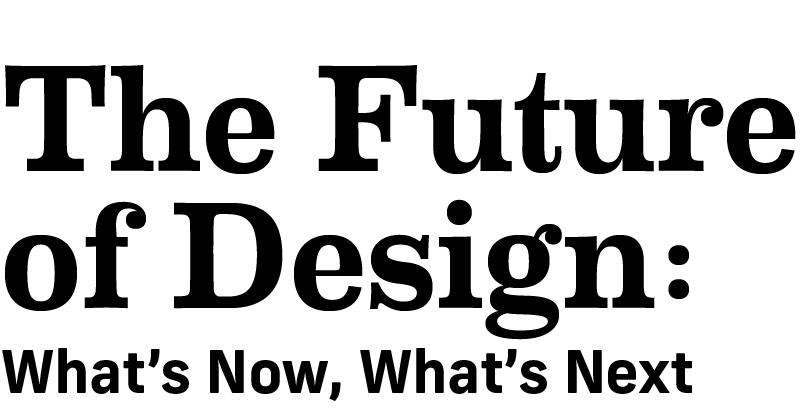The smell of a waffle cone wafting through the air would probably make you want a waffle cone, right? If you don't get it, are you disappointed or frustrated?
That's how residents with dementia may feel if their senses were engaged to one thing, but then it didn't happen, said researcher Jennifer DuBose at the Environments for Aging Conference on Sunday in Baltimore, MD.
DuBose, associate director of SimTigrate Design Lab presented alongside architects Joshua Crews and Erin West from CDH Partners in a session titled "Senses and the Environment: Reaching Beyond the Dementia to Engage the Person."
Crews and West work with DuBose to find and read as many articles about dementia and designing for dementia residents as possible. They've found that the senses play a huge role in how an environment should be created and use this information in designing future CDH Partners projects.
"Right now there are 5.2 million people living with dementia," West said. "Two-thirds of them are women. By 2050, there will be 13.8 million people living with the disease and the majority will be over 85. We're needing to figure out solutions and trends to accommodate this population."
In her research, DuBose focuses on patient-centered design.
"It recognizes that we are all people and we all have variable needs," she said. "In (designing) dementia facilities, this gets us to stop thinking about the people as patients and residents."
DuBose added that research on design for dementia patients holds a place in her heart.
"My mother had dementia and I've seen what it looks like first-hand," DuBose said. "Now my uncle has dementia, and somewhere down the line I may have dementia. So I want to get this right for me and for my family."
Below are the findings and recommendations DuBose, West and Crews make based on each sense.
Sight
Contrasting is used oftentimes to distinguish a wall from a floor, said Crews. As residents get older,, yellowing vision may occur and if door trim is painted a similar color to the door or wall, a resident may not be able to distinguish that it's an "employee only" zone.
"When there's yellowing, almost all your saturation is gone, colors are less vibrant and it's hard to tell a difference," Crews said.
A lot of what helps these issues is lighting a building based on circadian rhythms, said West.
"What helps is reducing glare and using natural lighting," West added. "The quality of the natural light is what we can help control. You can do this by increasing overhangs, providing areas for large windows and exposure to light at the right time of day."
Smell
DuBose shared a story about how when her mother was in a dementia facility, one day she went to visit her and noticed she smelled "uncharacteristically clean."
Her mother had wandered into a room that was being prepared for a new resident and decided to take a nap on the bed, but before she did, she found bowl of air fresheners that looked like candy, so she ate some.
In the end, she wasn't hurt, but she smelled something familiar and the bowl of fresheners lookeed like rock candy, so it was familiar to her and she decided to snack.
"Don't put things out that look and maybe smell like candy," DuBose said.
A different way to use smell as a signal for something familiar is to diffuse it into the air when it's time for something. For example, one of the facilities West and Crews mentioned had an ice cream parlor. Whenever the parlor was open, a diffuser was used to scent the area like a waffle cone. When residents smelled it, they came wanting ice cream.
"People can connect the smell of waffle cones with ice cream and remember that's what that smell means," DuBose added.
Crews said another method of either diffusing or suppressing smells is the use of negative and positive air pressure in the rooms.
"Say something unpleasant happens in a room," Crews said. "Instead of letting that air get out into the rest of the facility, we can negatively pressurize the room so that it stays in there and is taken out of the facility in a different way."
Or, he added, when the kitchen is cooking dinner, maybe you could suppress that smell until 15 minutes before it's time to eat, and it'll be an olfactory cue that the food is almost ready.
Taste
"We have to be really careful about how we make things pretty," DuBose said. "Do we want to mask that something is a cleaning product or air freshener? Probably not."
The example she used in her presentation was a soap bottle dispenser that looked a lot like a Coke bottle with a straw in it. For someone with poor vision, it could be hard to distinguish that this was not Coke or some fruity soft drink.
Touch
Inauthentic materials are confusing for people with dementia, Crews said. If a metal door is disguised with a wood-like finish, but is cold to the touch, that could be disorienting.
A fake bowl of fruit is a mixed signal because a resident would know that they can eat fruit, but ingesting plastic fruit would be harmful.
Touch is also important in communicating with residents, DuBose added. The only way she could connect with her mother or uncle to let them know she was talking to them was by physically touching their arm.
"You need to be able to touch someone as a way of saying 'I'm here, I'm talking with you,'" DuBose said. "A lot of touch that residents feel is functional, like toileting or bathing, so it's important to add non-functional touch points as well."
A few examples Crews and West shared of touch are beauty parlors or sturdy moveable furniture so that family members can sit close to their loved one.
Sound
Figure out the best place for a television before you install it, advised West. For example, if a resident is outside enjoying the calm of nature, walking into a room blaring a loud, angry-sounding show would be disorienting and alarming.
West and Crews also suggested trying to find a way to reduce the number of alarms or call buttons residents hear. Those are sounds you wouldn't normally hear at home, they said.
To incorporate one or more of the five senses, the speakers suggested adding activity kitchens and gardens.
Couldn't make it to the conference? Follow along on Twitter using the #EFAcon hashtag.









